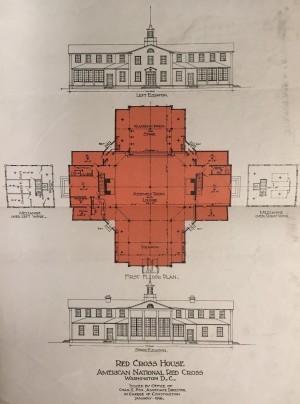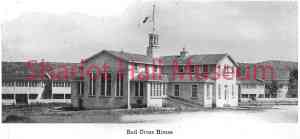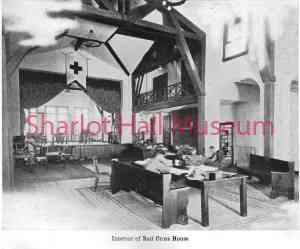By Worcester P. Bong
 The American Red Cross (ARC), a nationally-recognized humanitarian organization, was founded by Clara Barton and her close acquaintances in 1881. Ms. Barton was inspired by the International Committee of the Red Cross organization while traveling in Europe. She led the ARC for 23 years, during which time domestic and overseas disaster relief efforts were the primary focus of the organization.
The American Red Cross (ARC), a nationally-recognized humanitarian organization, was founded by Clara Barton and her close acquaintances in 1881. Ms. Barton was inspired by the International Committee of the Red Cross organization while traveling in Europe. She led the ARC for 23 years, during which time domestic and overseas disaster relief efforts were the primary focus of the organization.
When the United States entered World War I in 1917, the ARC organization grew tremendously under new leadership. They received financial donations and established local community chapters to recruit members and volunteers. The ARC recruited nurses to serve in the military and staffed hospitals and ambulance companies. Nurses and nursing aides were also recruited to combat the worldwide influenza pandemic of 1918.
After World War I ended, the ARC focused on hospital, recreational and rehabilitative services for soldiers and veterans. One aspect of these services was the construction of convalescent homes, known as “Red Cross Houses” at several military hospital facilities. Whipple Barracks Army hospital was a recipient of a Red Cross House. ARC provided the military with construction funds to build these houses. Chicago architect Charles E. Fox (1879-1926) designed a standard plan for them. Consisting of a wood-frame building in a cruciform shape to represent the Red  Cross's familiar logo, a large central room provided a “homelike” atmosphere with high ceilings and a fireplace. The “arms” of the cross were created by the building's two wings, which housed a library, kitchen, billiards room and offices. On the second floor were bedrooms where patients' families could stay while visiting. Modifications could be made locally to this design.
Cross's familiar logo, a large central room provided a “homelike” atmosphere with high ceilings and a fireplace. The “arms” of the cross were created by the building's two wings, which housed a library, kitchen, billiards room and offices. On the second floor were bedrooms where patients' families could stay while visiting. Modifications could be made locally to this design.
The September 18, 1918 edition of the Weekly Journal-Miner reported that a Red Cross House along with new tuberculosis wards (TB) would be constructed at Whipple Barracks. Following months of construction, this Red Cross House was dedicated on July 17, 1919. The July 17th and 19th editions of the Weekly Journal-Miner reported on the dedication ceremony. Across the nation, many other Red Cross Houses were completed between 1918 and 1919.

Movies, card games, musical entertainment and chats around the fireplace were among the many activities provided at the Red Cross House to encourage socialization. Throughout the 1920’s, the Prescott Evening Courier reported on these activities, including noting Christmas presents for soldiers piling up (December 19, 1922), Thanksgiving festivities (November 24, 1928) and a holiday event (December 19, 1929).
In 1931 when the Veterans Administration (VA) acquired many of the military hospitals, operations of the Red Cross Houses were also transferred to the VA. The June 29, 1931 edition of the Prescott Evening Courier reported this transfer. Locally on July 1st, Miss Frances Maynard, VA Recreation Aide, assumed the duties from Miss T.H. Shureman, Red Cross Director. The Red Cross House, now called the Recreation Hall, was then managed by the VA’s Recreation Service.
Information on when the Recreation Hall was no longer used is uncertain. It’s possible that when the main hospital building was constructed between 1937 and 1939, the former Red Cross building was demolished.
Today, two former Red Cross Houses are located in Vancouver and at Fort Lewis, both in Washington State. They currently are used for other purposes. While the majority of these houses are gone, the American Red Cross continues as one of our nation’s top humanitarian organizations, dedicated to helping people in need throughout the U.S. and to working with other Red Cross networks, throughout the world.
“Days Past” is a collaborative project of the Sharlot Hall Museum and the Prescott Corral of Westerners International (www.prescottcorral.org). This and other Days Past articles are also available at www.archives.sharlothallmuseum.org/articles/days-past-articles/1 The public is encouraged to submit proposed articles and inquiries to dayspast@sharlothallmuseum.org Please contact SHM Research Center reference desk at 928-277-2003, or via email at archivesrequest@sharlothallmuseum.org for information or assistance with photo requests.


